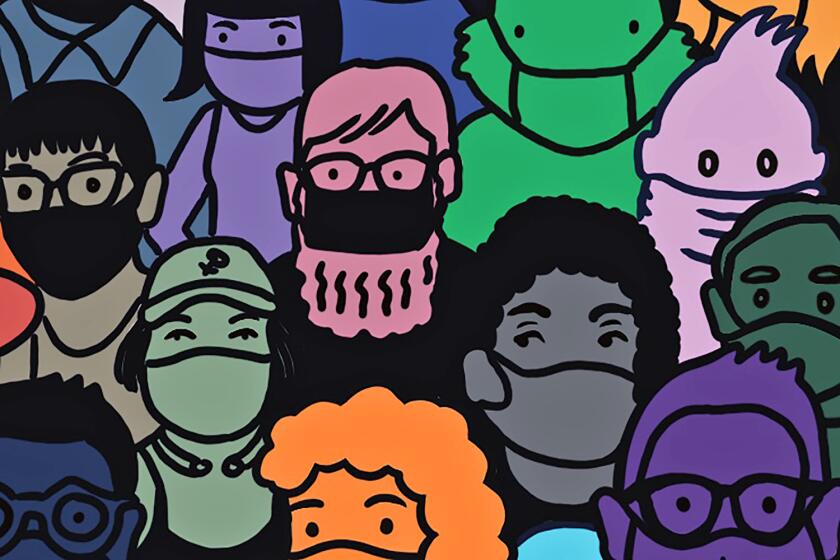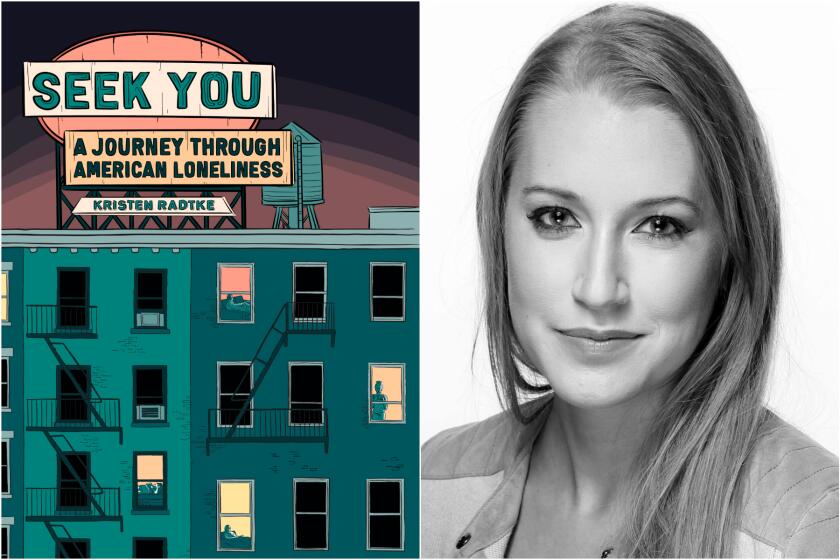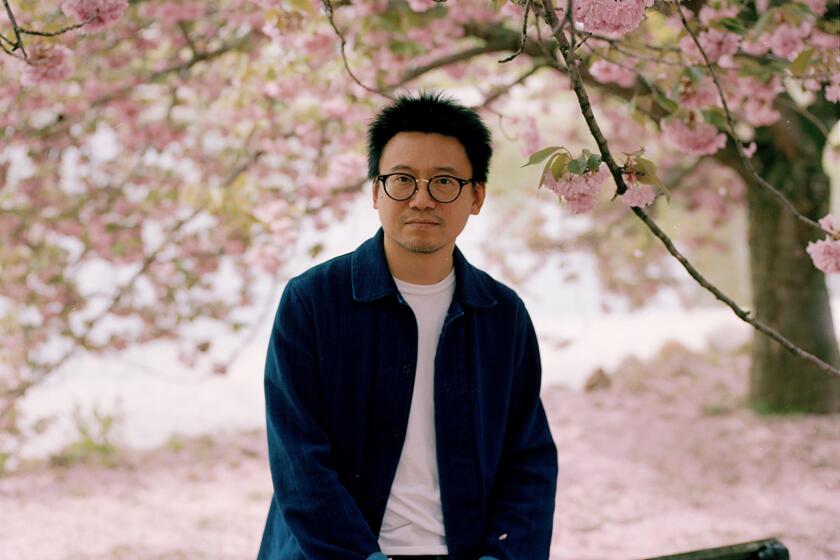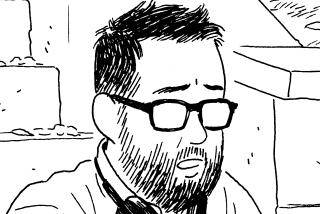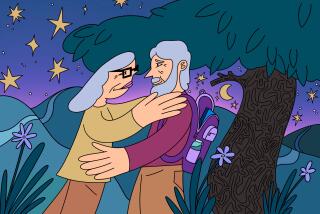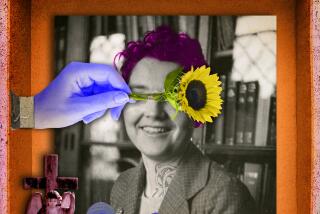They were once inseparable: A defiantly odd graphic memoir seeks a lost best friend
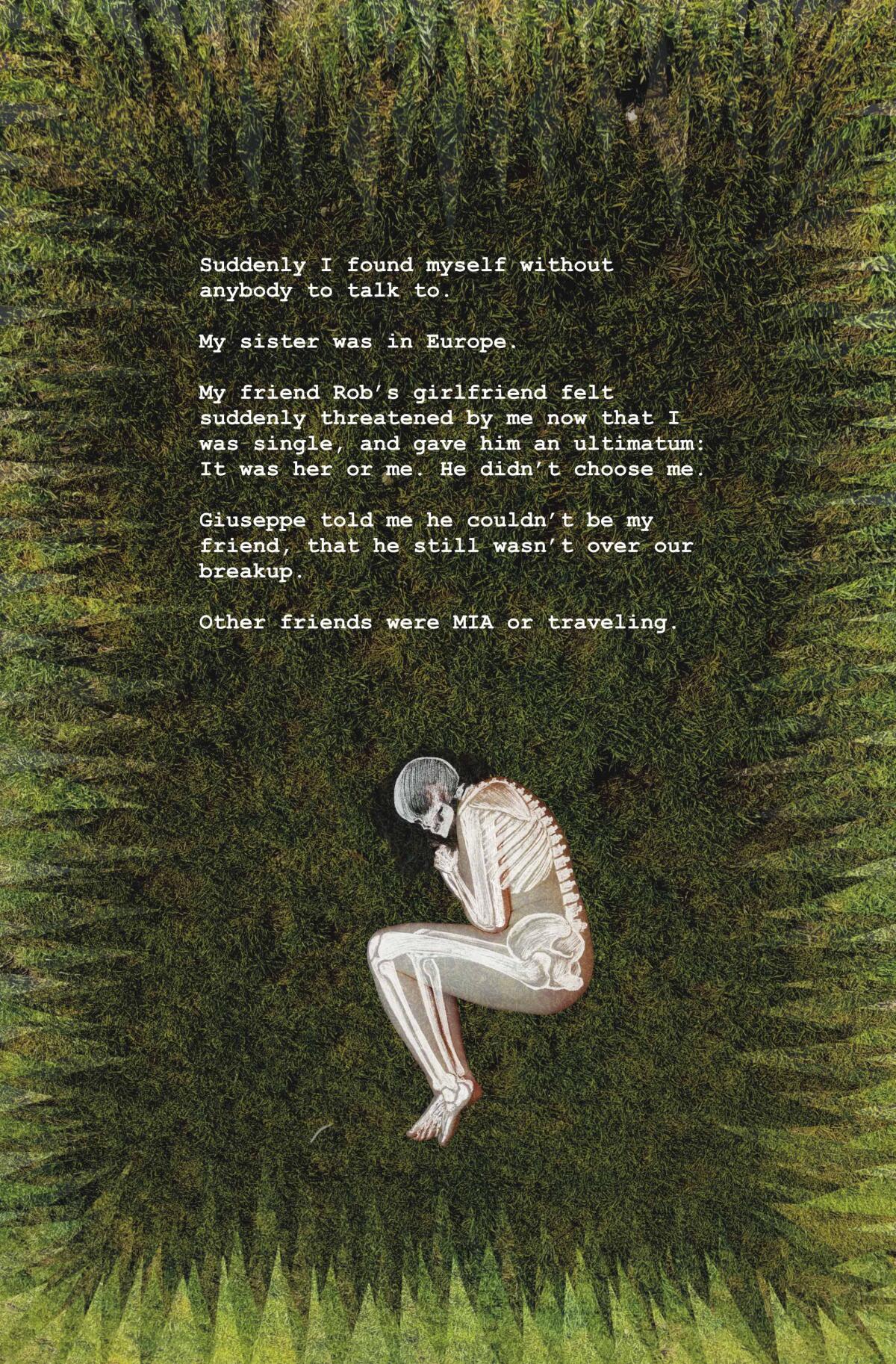
Memoirs usually focus on what the writer remembers. MariNaomi’s “I Thought You Loved Me” is instead about what the creator has forgotten or didn’t know in the first place. The book uses a barrage of techniques — scrapbook, comics, collage, reprinted letters, text — to fill the page and fill in the past. You might think the array of forms would give you a more kaleidoscopic view of the author’s history, relationships and life. But instead, the different modes tend to cancel one another out or interfere with one another, leaving the reader only more aware of gaps and erasures.
MariNaomi, a comics artist and visual artist, often works in memoir, most notably in “I Thought YOU Hated ME” (2016), which explores difficult female friendships and is a kind of companion volume to their latest.
In a graphic op-ed, an illustrator shows her cultural connection to mask-wearing and shares her hope that Americans will use them after the pandemic.
“I Thought You Loved Me” is about Mari’s relationship with a woman named Jodie. The two met in high school in Northern California and remained very close through their early 20s. Jodie was the first girl Mari kissed, leading Mari to realize they were bisexual. “We were schoolmates, then friends, then best friends, then nothing,” Mari writes in white text against an image of a clouded, misty sky. That nothing is both the theme and central mystery of this odd, melancholy book.
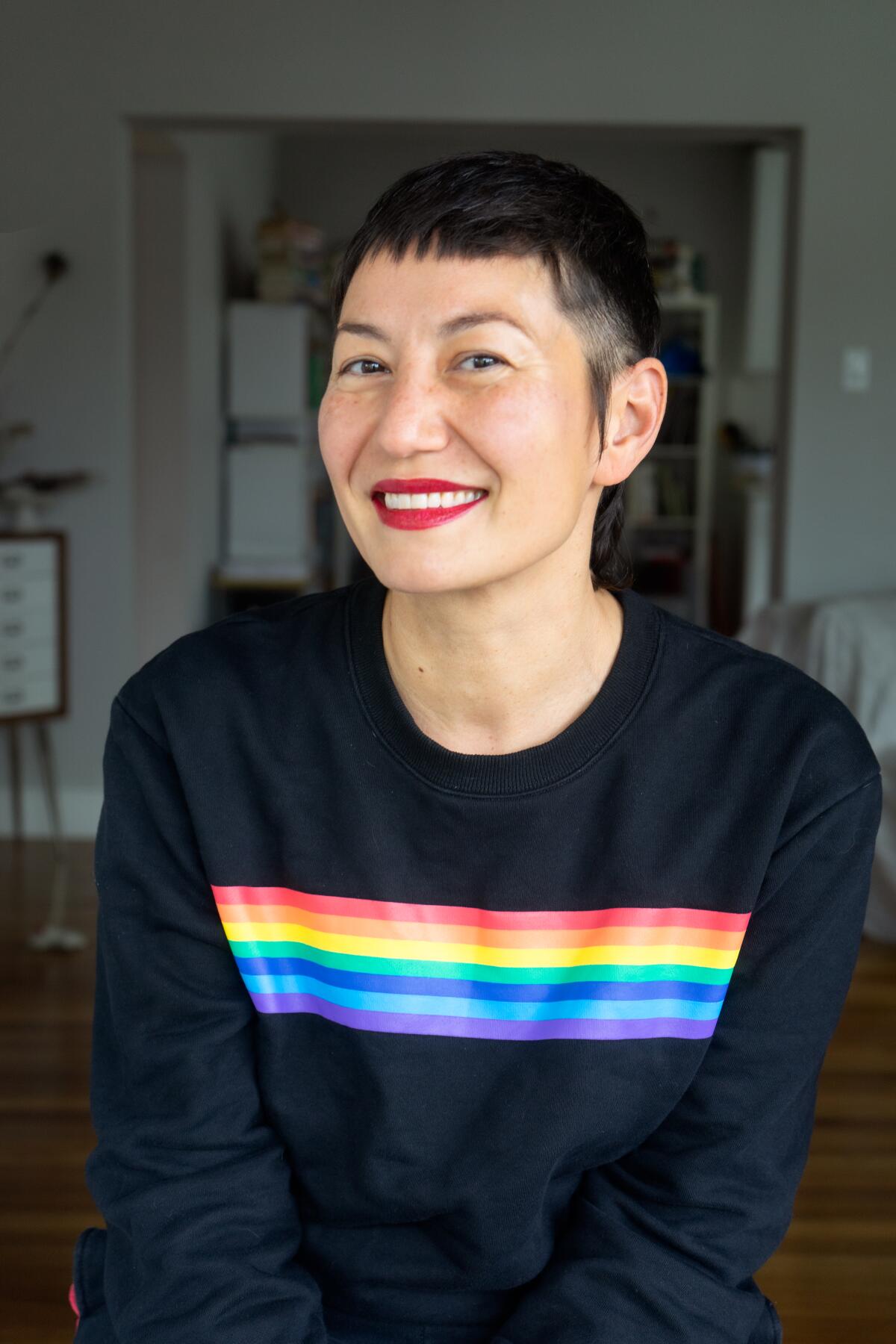
The vague cloud imagery is deliberate. Out of the blue, Jodie phoned Mari and said she didn’t want to be friends anymore. That was the end. But the end sprawls backward as a kind of erasure; Mari finds in trying to write the book that the relationship has faded from memory. The story opens with an effort to write the book; on one page you see a white square superimposed on a field of grass. Within the white square, or panel, Mari’s hand is drawn poised over an open book. The page within the page is blank. “Nothing,” the caption reads. Half on the grass and half on the square, a vaguely face-like outline floats, filled with flowers. It has no features.
This could be Mari’s head, or it could be Jodie’s. Because the book employs so many different art styles, its protagonists aren’t represented in any consistent way. Sometimes they appear as these flower-outline blobs, sometimes as very simplified cartoon sketches. They are also both represented by text written by Mari or reproduced from letters and journals.
The book also includes more realistic self-portraits, so that readers eventually get a somewhat stable sense of Mari’s physical appearance. But Jodie is never shown so clearly. In fact she is deliberately obscured. There is, for example, a 2000 photograph of Mari, Jodie and a pivotal boyfriend, whose name is always scribbled out in red. Mari smiles cheerfully, the boyfriend wears a mask and Jodie’s face is covered with a collage of red flowers.
In ‘Seek You,’ Kristen Radtke melds social science and personal anecdotes with hauntingly beautiful imagery, making the lonely feel less alone.
Mari has no stable image of Jodie to hold on to, but there are calendar notes, journal entries and letters helping to fill in the relationship. The two date some of the same people; they support each other through abusive relationships. Jodie’s experiences as a sex worker partly inspire Mari’s first novel. And then — nothing. Ten years later, Mari learns why.
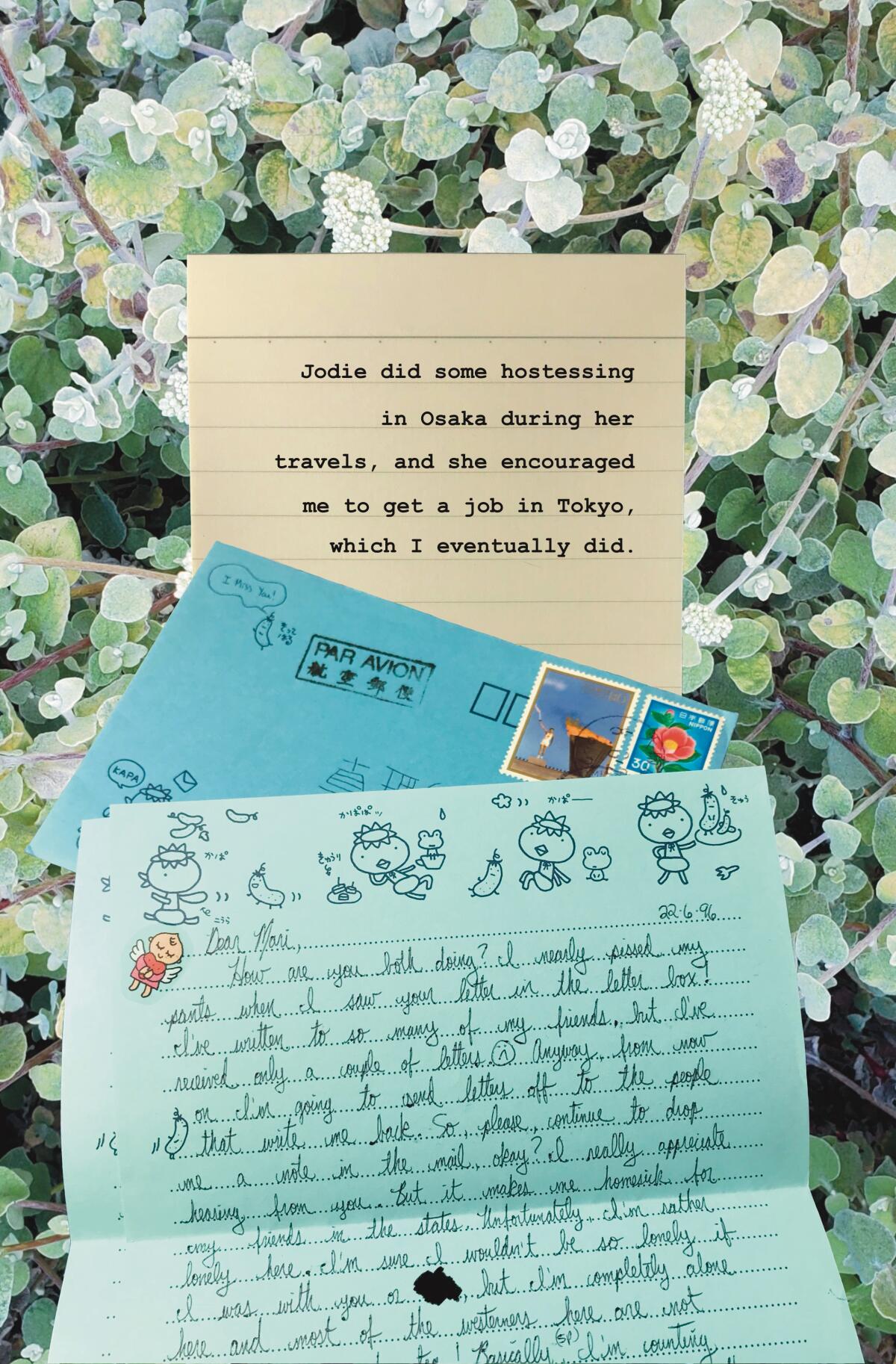
The revelation of betrayal, and the ensuing efforts at reconciliation, bring some clarity, but less than you might think. There’s an uncharacteristic text message that turns out to have been written by Jodie’s abusive boyfriend — but the reader never learns much about that relationship or its effects on Jodie. The eventual explanations for Jodie’s actions don’t completely coalesce either. Mari remembers more and understands more, but significant elements of the narrative remain obscure.
Among those unanswered questions is why exactly Jodie and Mari were friends in the first place. Jodie “was there for me when no one else was,” Mari writes; Jodie made them feel “special.” These explanations are fairly generic. Because of memory gaps, and because of the way the book distances the material, we’re told that the relationship is important, but we don’t exactly see it unfold or feel its weight. Jodie is more a cipher than a character, and it’s hard to create an emotionally meaningful relationship with a cipher.
Hua Hsu found his best friend at UC Berkeley -- and lost him soon after. He talks about “Stay True,” his new paean to friendship, music and identity.
The lack of affect is at least somewhat intentional; Jodie isn’t really at the center of this book about Jodie. The middle of “I Thought You Loved Me” wanders off to discuss Mari’s career in video game design and comics, other friendships and relationships. Is this a story about Jodie or isn’t it?
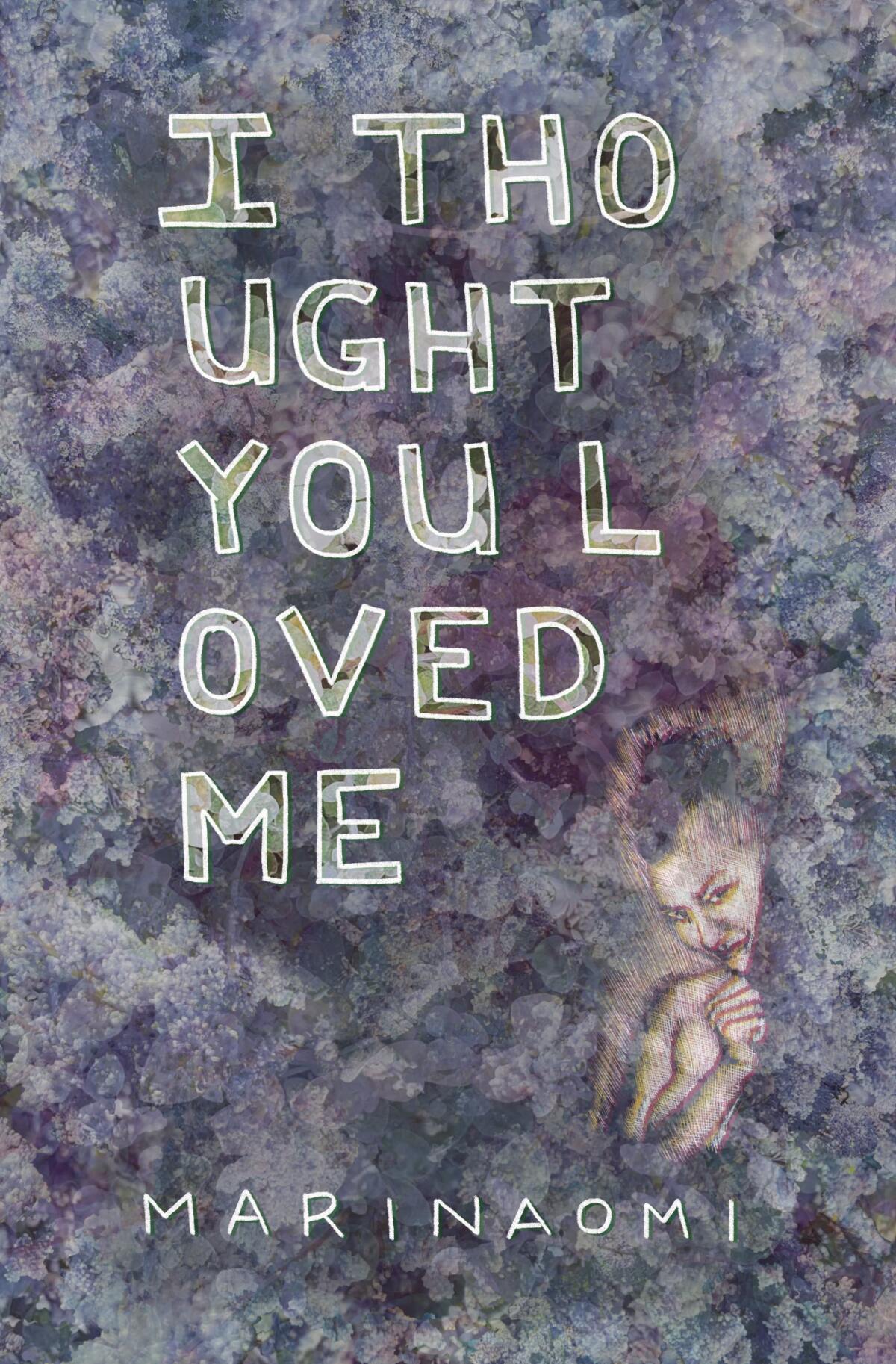
That’s in some ways the central question of the memoir. It doesn’t quite cohere because Mari’s relationship with and memory of Jodie doesn’t cohere. Losing a friend is losing a part of the self, not least because you end up wondering if the self you were with that friend ever existed in the first place. Jodie was central to Mari’s sense of who they were — and then central to Mari’s sense of who they weren’t. The relationship tore holes in them. To be true to it, the book has to be one of gaps.
The struggle with memory and self is core to a lot of memoir. Comics memoirs in particular often use visual ambiguity and distance as a way to think about the failure of memory and representation. Art Spiegleman’s “Maus” depicts his father, a concentration camp survivor, as a rodent — partly in an effort to find a visual language that can contain uncontainable trauma. Ariel Schrag’s wonderful memoir “Likewise,” about a breakup in the senior year of high school, uses a range of radically different styles to represent the fragmentation of memory and self. This hybrid medium is uniquely suited to exploring the hybrid nature of identity.
Toward the end of “I Thought You Loved Me,” there’s an image of Jodie in an airport, watching Mari leave. The drawing is a white page, with vaguely human outlines clustered around. In the middle of them floats a flowery green blob representing Jodie. This is the landscape of memory — hollow shapes, blank space and, here and there, a blot of ambiguous color and ambivalent feeling. MariNaomi worries that our relationships, our feelings, our selves may be nothing but thoughts — a sad collage of solipsism. But Mari insists on loving anyway.
Berlatsky is a freelance writer in Chicago.
More to Read
Sign up for our Book Club newsletter
Get the latest news, events and more from the Los Angeles Times Book Club, and help us get L.A. reading and talking.
You may occasionally receive promotional content from the Los Angeles Times.
